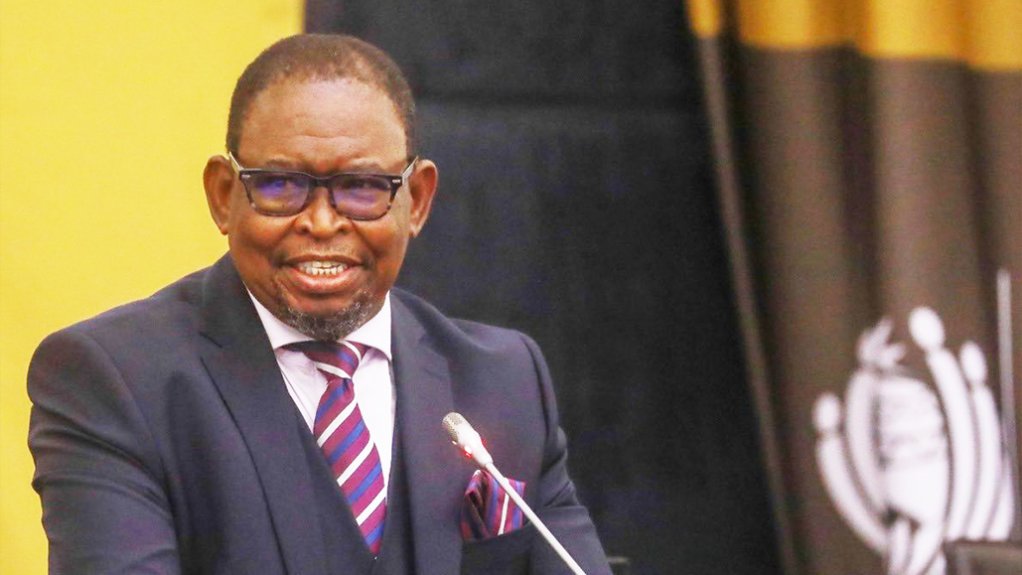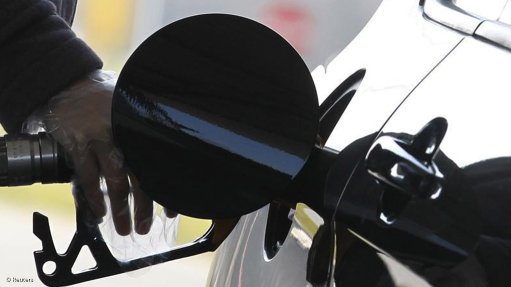Conditions linked to R254bn Eskom debt relief may lead to concessioning of coal plants
The R254-billion Eskom debt-relief package unveiled by Finance Minister Enoch Godongwana in his 2023 Budget includes a sweeping set of conditions that will restrict the State-owned utility’s capital expenditure to transmission- and distribution-related investments and could also result in coal-fired power stations being concessioned to private operators.
In addition, the National Treasury confirmed that the package had been proposed with the assumption that the recent tariff increases of 18.65% in 2023/24 and 12.74% in 2024/25 approved by the regulator would be implemented, as “without these increases, the debt-relief arrangement is not sustainable”.
This, despite an appeal made by President Cyril Ramaphosa earlier this year for the hikes to be postponed or moderated. The President later used one of his weekly newsletters to backtrack from that call, but the Democratic Alliance has launched a legal application to have the hikes set aside.
Eskom’s debt currently stands at R423-billion and is widely considered unsustainable to the point where it has become a direct cause of daily power cuts, which are undermining the country’s growth and development prospects.
The National Treasury officially lowered its 2023 growth forecast to 0.9% from 1.4%, largely as a result of loadshedding. The South African Reserve Bank is forecasting growth of only 0.3% this year.
The debt-relief package itself – which will be implemented over the coming three fiscal years and involves the National Treasury assuming responsibility for Eskom’s capital and interest payments of R168-billion and R86-billion respectively – diverges fundamentally from the debt-transfer proposal signalled by the Minister when he released the Medium-Term Budget Policy Statement (MTBPS) in October.
Swapping Eskom debt for National Treasury debt was said to be technically difficult to implement and could have also led to litigation by bondholders.
Instead, government has opted for a debt-to-equity conversion that did not require any specific engagement with bondholders in the first phase, as Eskom will be provided with advances of R78-billion in 2023/24, R66-billion in 2024/25 and R40-billion in 2025/26 to cover payments as they fall due. In 2025/26, however, government will directly take over up to R70-billion of Eskom’s loan portfolio, which will require consultation.
The funds will be advanced as an interest-free subordinated loan, to be settled in Eskom shares rather than cash, with the loan advances conditional on the repayment of pre-identified Eskom debt instruments.
These amounts will be financed through the R66-billion Medium-Term Expenditure Framework (MTEF) baseline provision that was outlined in the 2022 MTBPS, as well as through R118-billion in additional borrowing over the three-year period.
Largely as a result of the Eskom debt relief, government’s borrowing requirement will reach R555-billion in 2025/26, while gross loan debt will grow to R5.84-trillion in the outer year of the MTEF period.
Debt is now expected to stabilise at 73.6% of gross domestic product in 2025/26 compared with the 71.4% in 2022/23 estimated in the 2022 MTBPS.
The package marks a decisive shift from the previous approach taken by government to support the debt-laden utility; one that has involved regular injections since 2008/9, which have collectively resulted in bailouts amounting to R263.4-billion, and loan guarantees.
It also reflects an acceptance by government that Eskom’s operational failures, which have triggered an intensification of loadshedding that poses a threat to both growth and social stability, are intertwined with its unsustainable financial position.
“[Previous] allocations have failed to stem the collapse of Eskom’s balance sheet and operations.
“The utility imposes an enormous drain on the economy and its debt stands at an unsustainable R423-billion.
“Government guarantees R350-billion of this debt, which is at risk of default – a contingent liability that raises South Africa’s risk premium and borrowing costs,” the National Treasury conceded in its Budget Review.
THE CONDITIONS
The National Treasury stressed that the arrangement was subject to “strict conditions” including:
- Eskom’s capital expenditure being restricted to transmission and distribution, with generation-related capital expenditure to be limited to minimum emissions standards, flue-gas desulphurisation and required maintenance. While Eskom is disallowed from proceeding with new greenfields generation projects, it is permitted to continue with its solar investment at the retired Komati power station, for which it has received some support under the $8.5-billion Just Energy Transition Partnership;
- Eskom being disallowed from using the proceeds from the sale of noncore assets for capital and operating needs, with all proceeds to be used for the debt-relief arrangement;
- That the utility undertake no new borrowing from April 1, 2023, until the end of the debt-relief period, unless written permission is granted by the Minister of Finance;
- A reduction in Eskom’s guarantee framework agreement for the R350-billion facility (which expires at the end of March 2023) in line with National Treasury recommendations;
- That any positive equity balances in Eskom’s derivative contracts not be used to structure new debt or loan agreements without the approval of National Treasury, nor that it be used as ‘margin financing’;
- That the debt relief only be used to settle debt and interest payments; and
- That Eskom does not implement remuneration adjustments that negatively affect its overall financial position and sustainability.
While not included in the conditions set out in Annexure W3 to the Budget documents outlining the terms of the relief package, in his speech Godongwana confirmed a statement contained in the Budget Review that Eskom would also be expected to implement recommendations emanating from an independent assessment of its operations, which had been commissioned by the National Treasury.
POWER STATION CONCESSIONING
The National Treasury reported that it had appointed an international consortium with extensive experience in the operations of coal-fired power stations to review all plants in Eskom’s coal fleet by mid-2023 and advise on operational improvements. The consortium is led by Vgbe Energy and also includes Dornier Power, KWS Energy, RWE Technology and Steag Energy.
“Eskom is required to implement the operational recommendations emanating from this independent assessment.
“This will include a determination of which plants can be resuscitated to original equipment manufacturers’ standards, following which Eskom must concession all these power stations with clear targets for the electricity availability factor and operations.”
In addition, the Budget Review indicates that Eskom, the National Treasury, and the Department of Public Enterprises had agreed to design a mechanism for building new transmission infrastructure that would “allow for extensive private-sector participation in the development of the transmission network”.
This reform is also described as an “obligatory condition” that is required if the relief package is to prove successful.
Godongwana also said that it would be counterproductive to undertake debt-relief at Eskom of such a significant magnitude without addressing the risk of outstanding municipal debt to the utility, which stood at R56-billion.
While indicating that many of the biggest contributors to the debt were in financial distress themselves and were, thus, unlikely to be in a position to pay their legacy debt, an initiative would be launched to “avoid a repeat of debt build-up over time”.
“Eskom’s long-term financial viability depends on its customers paying their dues.
“National Treasury will publish details for accessing the debt relief in a circular in March 2023 [and] implementation will start from 1 April,” the Minister said.
Article Enquiry
Email Article
Save Article
Feedback
To advertise email advertising@creamermedia.co.za or click here
Comments
Press Office
Announcements
What's On
Subscribe to improve your user experience...
Option 1 (equivalent of R125 a month):
Receive a weekly copy of Creamer Media's Engineering News & Mining Weekly magazine
(print copy for those in South Africa and e-magazine for those outside of South Africa)
Receive daily email newsletters
Access to full search results
Access archive of magazine back copies
Access to Projects in Progress
Access to ONE Research Report of your choice in PDF format
Option 2 (equivalent of R375 a month):
All benefits from Option 1
PLUS
Access to Creamer Media's Research Channel Africa for ALL Research Reports, in PDF format, on various industrial and mining sectors
including Electricity; Water; Energy Transition; Hydrogen; Roads, Rail and Ports; Coal; Gold; Platinum; Battery Metals; etc.
Already a subscriber?
Forgotten your password?
Receive weekly copy of Creamer Media's Engineering News & Mining Weekly magazine (print copy for those in South Africa and e-magazine for those outside of South Africa)
➕
Recieve daily email newsletters
➕
Access to full search results
➕
Access archive of magazine back copies
➕
Access to Projects in Progress
➕
Access to ONE Research Report of your choice in PDF format
RESEARCH CHANNEL AFRICA
R4500 (equivalent of R375 a month)
SUBSCRIBEAll benefits from Option 1
➕
Access to Creamer Media's Research Channel Africa for ALL Research Reports on various industrial and mining sectors, in PDF format, including on:
Electricity
➕
Water
➕
Energy Transition
➕
Hydrogen
➕
Roads, Rail and Ports
➕
Coal
➕
Gold
➕
Platinum
➕
Battery Metals
➕
etc.
Receive all benefits from Option 1 or Option 2 delivered to numerous people at your company
➕
Multiple User names and Passwords for simultaneous log-ins
➕
Intranet integration access to all in your organisation



















